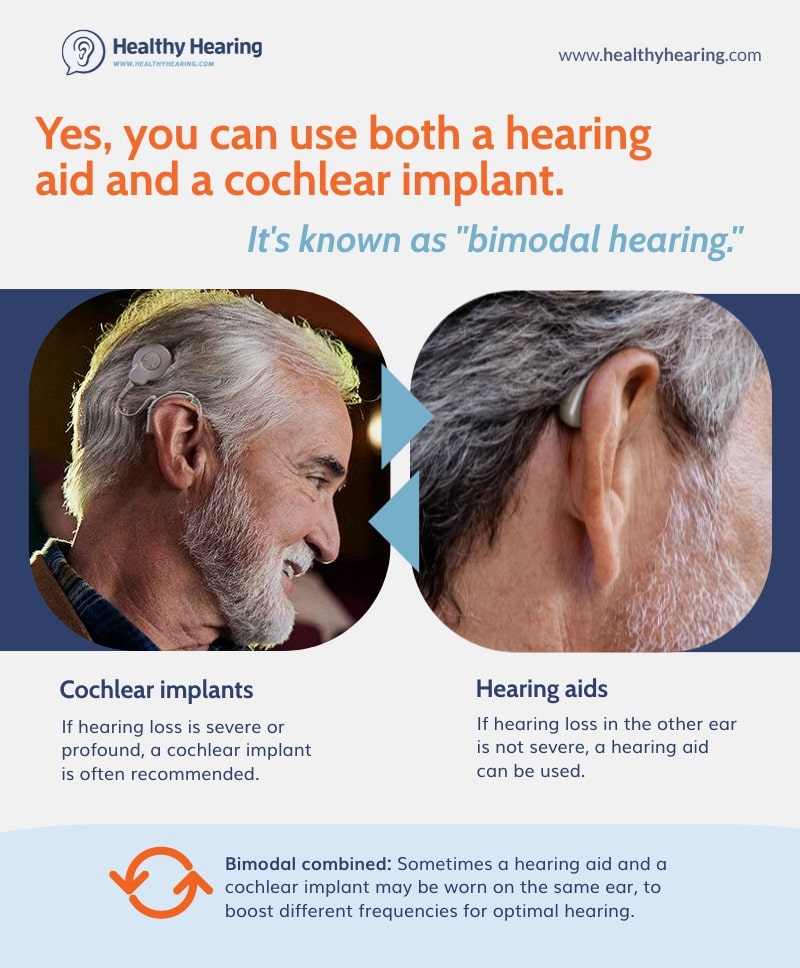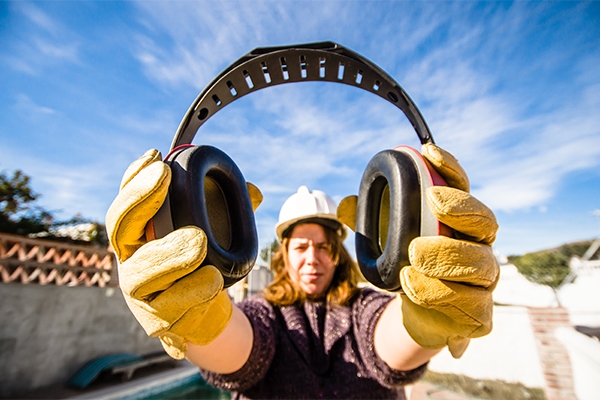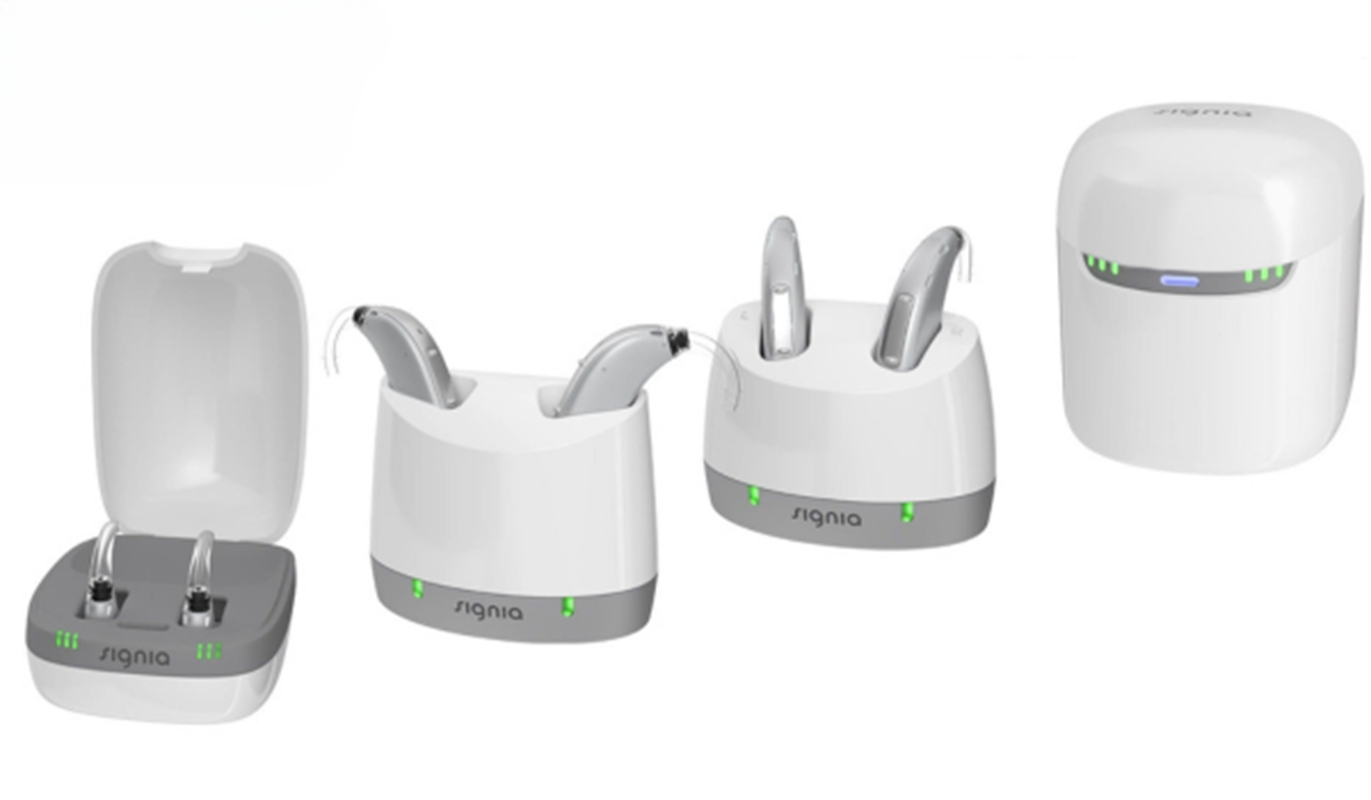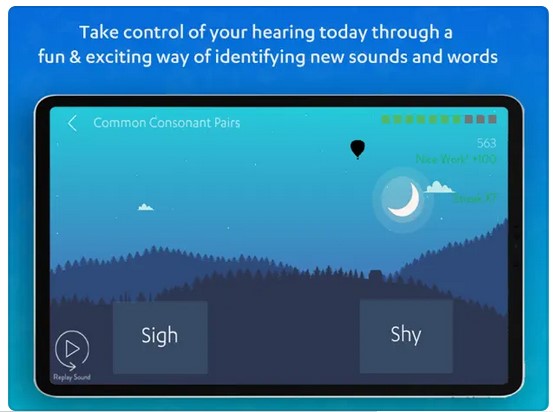For many people, two hearing aids will work just fine for helping with hearing loss.
For others, though, it's a better idea to use a cochlear implant in one ear and a hearing aid in the other—or a similar combination, notes Sarah A. Sydlowski, AuD, Cleveland Clinic’s Audiology Director, Hearing Implant Program, and former president of the American Academy of Audiology.
Both devices can help treat sensorineural hearing loss, the most common type of hearing loss, which relates to the nerves that help convert noise into sound. This often happen when microscopic sensory cells in your inner ear aren’t working the way they used to, which is common with aging or noise exposure (or both).

Hearing aids vs cochlear implants (and why both may help)
Hearing aids
What are hearing aids and how do they help? Hearing aids use a sophisticated sound processor and microphone to amplify certain sounds so that your remaining sensory cells are stimulated adequately.
What are the drawbacks? When too many hearing cells are poorly functioning, sound may seem louder with hearing aids, but not clearer. That’s when it makes sense to have a cochlear implant.
Cochlear implants
What about cochlear implants? A cochlear implant is a small electronic device that consists of an external device and a surgically implanted internal portion. The external portion sits behind the ear and consists of a microphone, speech processor, and signal transmitter. The internal portion is surgically placed under the skin behind the ear and consists of a signal receiver and an electrode array.
Rather than making sounds louder, the electrode array of a cochlear implant takes electrical impulses from the receiver and sends them directly to the hearing nerve. This results in better clarity, especially for understanding speech.
What are the drawbacks? Hearing via a cochlear implant doesn’t sound the same as natural hearing because it provides sound by bypassing the sensory cells in the inner ear.
Sometimes the best solution is to use both
A cochlear implant provides improved sound clarity, Sydlowski says. Hearing aids, meanwhile, provide balance and sound directionality (knowing where sound is coming from), an improved ability to hear speech in noise, and better musical clarity.
Hearing aids and cochlear implants offer unique benefits and drawbacks. Fortunately, they can be used together in varying combinations to maximize the benefits.
Bilateral, bimodal and bimodal combined hearing
Depending on your hearing loss and lifestyle concerns, your audiologist may recommend one of the following hearing configurations:
- Bilateral: a cochlear implant in each ear. This is typically recommended for people who will not be optimally helped by hearing aids and need a more powerful solution.
- Bimodal: a cochlear implant in one ear and a hearing aid in the other. This option works best for those with some residual natural hearing in the unimplanted ear that can be addressed with a hearing aid.
- Bimodal combined: a hearing aid and cochlear implant in one ear and a hearing aid in the other. This is often recommended when it’s possible to amplify the hearing in the lower pitches with a hearing aid while replacing the hearing in the middle and higher pitches with hearing through a cochlear implant.
Transitioning to a cochlear implant
Because most adults still have some natural hearing in one or both ears, Dr. Sydlowski said it’s common to receive an implant in only one ear initially.

connected, reducing the risk of social isolation.
If the hearing in the unimplanted ear continues to decrease or the hearing aid doesn't provide enough benefit, a second cochlear implant will be considered.
Go deeper: Cochlear implants for older adults
Ask about cochlear implants sooner rather than later
When it comes to optimal hearing, two ears are always better than one, Dr. Sydlowski said.
“We don’t have one ear as a spare–it serves a purpose,” she said. “The earlier you pursue appropriate management of your hearing loss, the better the outcomes are. It does not pay to wait.”
Only about 2% of people who could benefit from a cochlear implant have one, she explained.
“Cochlear implants have long been thought of as a last resort and something to try when hearing aids don’t work at all. This is very outdated," she said.
Bottom line: "Today we know that cochlear implants are most successful the earlier they are recommended and pursued. Some people are scared to make the leap to a cochlear implant, but I hear ‘I wish I’d done this sooner’ more than anything else," she added.
Go deeper: How we hear, explained.
Freelance writer Debbie Clason contributed to this article. She has more than 40 years experience as a journalist, corporate marketing director and freelance writer and owns the marketing and communication business Clason Communcations.
The above is the interpretation of Bimodal Hearing: CI in One Ear, Hearing Aid in the Other provided by Chinese hearing aid supplier Shenrui Medical. Link https://www.srmcm.com/Blog/Bimodal_Hearing_CI_in_One_Ear,_Hearing_Aid_in_the_Other.html of this article is welcome to share and forward. For more hearing aid related information, please visit Blog or take a look at our Hearing aids products















